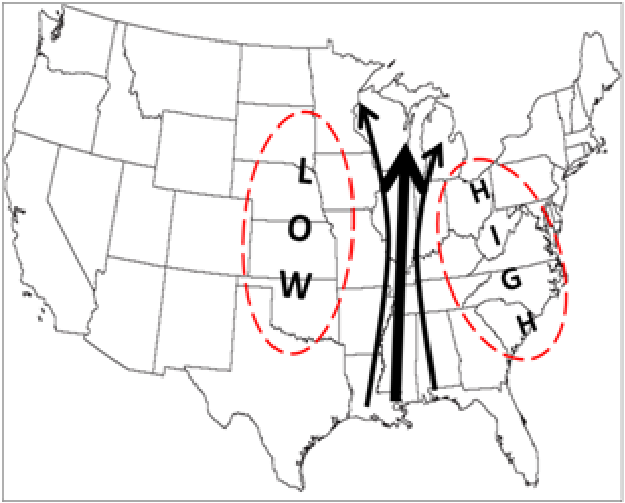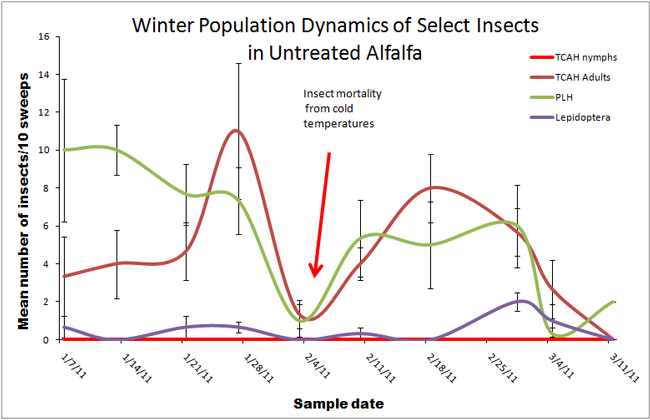Several insects can reduce alfalfa yields such as the Empoasca leafhopper group (ELH) which feeds on a wide range of plants and is capable of successful reproduction on over 200 plant species in 25 different families. The ELH found in California alfalfa hay is actually made up of a complex of almost identical insects in appearance and behavior that include the Potato leafhopper, Empoasca fabae (Harris), the Garden leafhopper, Empoasca solana DeLong, and the Mexican leafhopper, Empoasca mexara Ross and Moore.
Empoasca leafhoppers are a severe pest of alfalfa in the eastern half of the USA and portions of Canada. Empoasca leafhopper infestations in California are usually considered mild but severe infestations requiring management have occurred as recently as 2009. The ELH are migratory insects which overwinter in the southern US between southern Louisiana and northern Florida. Leafhoppers make their annual northward migration into the US each spring along with the wind corridor.
Hopper winter populations

